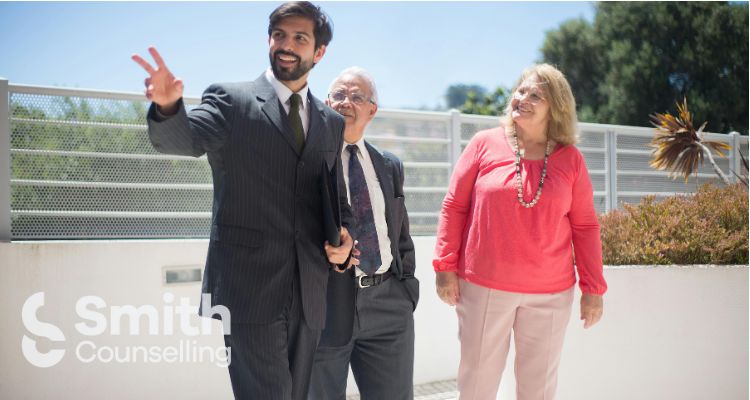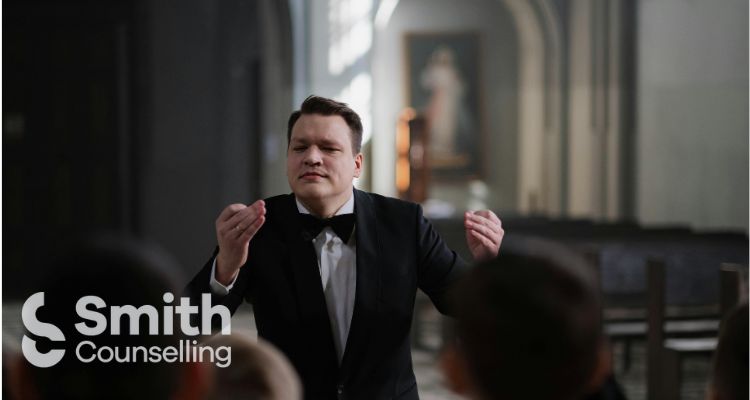
Unlocking Charisma: Nonverbal Skills that Influence Without Saying a Word
Master gestures, tone, and presence for powerful speaking
Your presence speaks volumes before you utter a single word. When you command a room through deliberate movement, intentional gaze, and authentic energy, you create an immediate connection that transcends language itself.
Think of the last time you felt genuinely moved by a speaker. Beyond their words, what drew you in? The subtle confidence in their stance? The warmth radiating through their smile? The purposeful pauses that created space for reflection?
These nonverbal elements form the hidden architecture of charismatic communication. They constitute up to 93% of your message transmission according to communication research. While your words matter profoundly, your body tells the authentic story that audiences instinctively trust.

The Power of First Impressions
Your audience forms judgements within seven seconds of seeing you. This reality underscores the profound impact of your physical presence when delivering any presentation. The good news? You can harness this phenomenon deliberately.
Consider your entrance as your first act of communication. How you walk onto a stage or into a meeting room telegraphs your relationship with yourself and sets expectations for everything that follows.
What message does your entrance currently convey?
Strong presenters understand presence begins with personal alignment. When your internal state aligns with your external expression, audiences experience you as authentic. This congruence creates an immediate sense of trust that mere words struggle to establish.

Mastering the Powerful Pause
Silence carries tremendous weight when wielded intentionally. The strategic pause serves as punctuation for your spoken content, creating space for crucial moments of absorption and reflection.
Consider these applications of the purposeful pause:
Before making a key point (creates anticipation)
After delivering powerful information (allows processing)
During moments of emotional significance (deepens impact)
When transitioning between concepts (signals structural shifts)
Many speakers rush through precious moments of silence due to discomfort with gaps. Yet these apparent voids actually constitute some of your most influential communication opportunities.
Where might you incorporate more intentional pauses in your next presentation?

The Authority of Stillness
Movement has purpose in presentations. Purposeless movement undermines your message. The capacity to stand with comfortable stillness demonstrates self-assurance and commands attention.
Watch seasoned presenters closely. They move with intention between deliberately chosen positions, then settle into moments of grounded stillness when delivering key messages. This pattern creates visual rhythm that helps audiences track important content.
Practice the art of "planting" yourself during crucial statements. Feel your feet connecting firmly with the ground, allowing energy to flow upward through your body. This grounding technique simultaneously calms your nervous system while projecting steadiness to your audience.

Eye Contact as Connection
Your gaze creates immediate relationship bridges with audience members. Effective eye contact follows patterns that balance inclusion with personal connection:
Hold individual connections for 3-5 seconds (creates personal acknowledgment)
Scan different sections regularly (ensures group inclusion)
Match eye contact duration to point significance (signals importance)
Maintain consistent connection throughout (sustains engagement)
For virtual presentations, look directly into your camera lens rather than at faces on screen. While counterintuitive, this approach creates the experience of direct eye contact for all viewers simultaneously.

Gesture Architecture
Your hands serve as visual punctuation for your spoken content. Thoughtful gestures emphasise key points, illustrate concepts, and create visual interest throughout your presentation.
Effective gestures generally originate from your centre rather than appearing as disconnected hand movements. This integration creates congruence between your body language and your message.
Consider these gesture zones:
Power zone (navel to shoulders): Conveys confidence and authority
Heart zone (centre chest): Communicates authenticity and compassion
Vision zone (above shoulders): Expresses inspiration and possibilities
Move between these zones intentionally based on the emotional tone and purpose of each message segment.
Which gesture zones feel most natural to you currently?

Facial Expression as Connection Currency
Your face broadcasts continuous feedback about your relationship with your content. Authentic expression creates immediate rapport while inconsistent facial engagement creates cognitive dissonance for viewers.
Practice expression congruence by ensuring your face authentically reflects the emotional texture of your content. When discussing challenges, allow appropriate concern to show. When sharing triumphs, let genuine joy emerge.
Effective speakers demonstrate facial engagement even during moments when they listen to audience questions or responses. This consistent attentiveness signals respect and creates ongoing connection loops.

Vocal Presence Beyond Words
While strictly speaking your voice involves verbal elements, its nonverbal qualities dramatically influence audience perception. These paralinguistic features include:
Pace variation: Creates emphasis and maintains interest
Volume dynamics: Signals importance and builds engagement
Tonal range: Conveys emotional texture and authenticity
Strategic pausing: Allows processing and builds anticipation
Record yourself delivering content and listen specifically for these nonverbal vocal elements. Where might you incorporate greater variation to enhance engagement?

The Charisma of Congruence
Charismatic presentation emerges from alignment between your internal state and external expression. When your movements, gestures, facial expressions and voice all tell the same story as your words, audiences experience you as trustworthy and compelling.
This congruence requires self-awareness development. Before important presentations, tune into your authentic relationship with your material. What genuinely excites you about this content? Where do you feel natural passion? Allow these authentic responses to inform your nonverbal communication rather than adopting prescribed gestures that feel unnatural.

The Physical Foundation of Presence
Your physical stance creates the foundation for all nonverbal communication. A balanced, grounded posture allows energy to flow naturally through your body while signalling confidence to your audience.
Practice this presence reset whenever you feel disconnection during presentations:
Feel both feet connecting evenly with the floor
Allow your weight to distribute comfortably through your skeleton
Release unnecessary tension from your shoulders and jaw
Take one full breath while maintaining this alignment
This simple reset takes mere seconds yet dramatically shifts both your internal experience and external projection of confidence.

Proxemics: The Language of Space
How you navigate physical space during presentations adds another dimension to your nonverbal influence. Consider these spatial dynamics:
Moving toward audiences creates intimacy and connection
Stepping back creates perspective for broader concepts
Lateral movement signals transitions between points
Height variation (sitting, standing, moving to different levels) creates visual interest
Design your presentation space intentionally. Where will you stand during key moments? How might you use movement to signal transitions between content segments?

The Clothed Body as Visual Message
While your natural presence forms the foundation of nonverbal communication, your clothing choices provide a visual frame that influences audience perception. Consider your attire as an extension of your nonverbal messaging.
Effective presentation attire balances these priorities:
Audience appropriateness: Meeting expectations for your context
Personal authenticity: Reflecting your genuine style
Comfort: Allowing natural movement and presence
Message congruence: Aligning with your content themes
When these elements align, your clothing becomes invisible, allowing your presence and message to take centre stage. When misaligned, attire can create distractions that undermine your nonverbal effectiveness.

Props as Nonverbal Emphasis
Physical objects incorporated strategically into presentations create powerful nonverbal impact. Consider how you might integrate:
Visual demonstrations: Making concepts tangible
Symbolic objects: Creating memorable anchors for key points
Interactive elements: Engaging multiple senses
Each prop should earn its place by enhancing understanding rather than merely creating novelty. The most effective props illuminate concepts that words alone struggle to convey.

Developing Your Nonverbal Fluency
Like any communication skill, nonverbal fluency develops through conscious practice and feedback. Consider these development approaches:
Record practice sessions: Watch with sound off to focus exclusively on visual elements
Practice in segments: Master specific nonverbal skills separately before integration
Seek specific feedback: Ask trusted colleagues to observe particular elements
Study effective communicators: Notice nonverbal patterns that create impact
Remember that authentic nonverbal communication flows from genuine connection with your message. Technical perfection matters less than congruent expression that aligns with your natural communication style.

Putting It All Together: Your Nonverbal Journey
Developing charismatic nonverbal skills constitutes an ongoing journey rather than a destination. Each presentation provides fresh opportunities to refine your physical presence and expand your nonverbal repertoire.
Where do you currently feel strongest in your nonverbal communication?
Which area offers your greatest opportunity for growth?
Consider selecting just one nonverbal element to focus on during your next presentation. This targeted approach allows for mindful development without overwhelming your capacity for presence.

The Ultimate Goal: Beyond Technique
While technique provides essential structure for nonverbal skill development, the ultimate aim transcends mechanical application. True charisma emerges when you become so comfortable with these elements that they flow naturally from your authentic connection with your message and audience.
When you reach this integration point, you communicate through your entire being rather than merely through words. This wholeness creates the magnetic presence that draws audiences in and makes your message unforgettable.
Your journey toward nonverbal mastery represents an investment not just in your professional communication but in your capacity for human connection across every domain of life. By developing these skills, you cultivate presence that influences positively in every conversation, meeting, and relationship.
Ready to take your speaking presence to the next level? Download our free guide "Reignite Your Life's Inspiration" for additional techniques that will transform your communication impact both on and off stage.
Michael Don Smith provides presentation skills training, business communication coaching, and signature speech development programmes for professionals ready to amplify their impact. Through personal development workshops focused on communication and rapport skills, clients learn to master their message and deliver high impact presentations that genuinely move audiences. Learn more about our professional speaking programs at smith-counselling.com.




